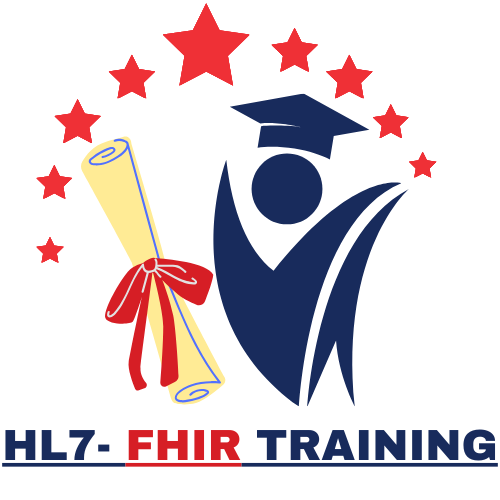Step into the future of healthcare interoperability with our FHIR Training! Learn how Fast Healthcare Interoperability Resources (FHIR) simplifies and accelerates healthcare data exchange. Whether you’re a developer, healthcare IT professional, or system integrator, this course equips you with the expertise to build, implement, and optimize FHIR-based solutions.
FHIR Standards Training
The training covers all the concepts of HL7 FHIR standard. Some topics are covered in depth. FHIR is the latest standard by HL7 and based on the concept of Resources and works on REST API. Training will cover all FHIR concepts including resources, APIs, searching, bundles, profiling, slicing and IG etc. It provides good coverage to certification concepts for the HL7 FHIR Foundations Implementer certification exam.
Learning Outcomes
By the end of the course, participants will achieve the following:
• Good knowledge of HL7 FHIR standard
• Ability to read and write FHIR Resources
• Good knowledge on:
o Bundles & Transactions
o Query & Searching
o Profiling, Conformance
o IG
• Understanding of data types and their use
Pre-requisites
• Must have strong knowledge of JSON
• Should have basic knowledge of XML
Total Duration of the Course
30 hours
Detailed Training Course Outline
1. Chapter 1: Introduction to FHIR
• What is FHIR?
• Why FHIR?
• FHIR Scope
• Why FHIR is better – comparison with V2/V3
• Navigating FHIR site
• FHIR Architectures
o FHIR Use cases
o FHIR and Architectural Principles
o FHIR Decomposition
o Organizing FHIR Resources
• FHIR Overview
o Background
o Components
o Framework
o Modules
• What is “the 80 percent”?
• FHIR Maintenance Process (Change Management and Versioning)
• FHIR Licensing and IP
2. Chapter 2: FHIR Resource Concepts
• Choosing the right resource based on a use case
• Resource structure
o Cardinality
o Data types – primitive, complex, base data type, derived
o Flags – summary, modifying, constraints & must support flags
o JSON format – primitive, complex element, repeating, Boolean, number, etc.
o XML format – sequence, primitive/complex element
• Use terminology for a use case
o Coded elements, code, Coding, CodeableConcept data types, binding strengths
• Use existing extensions for a use case
o Writing extensions
o Selecting extensions based on use cases
o FHIR extension registry
o Reading extension definitions, data types, writing (use of URL and value[x])
o Extensions for primitive JSON elements
o ModifierExtension element
o Complex extensions
• Resource referencing
o Literal referencing – using resource id (relative and absolute) and contained
o Logical referencing
o Actual JSON/XML examples
Assignment / Hands-on Exercise
I. Identify the correct Resource – Find the best resource for multiple interoperability scenarios
II. Create your first Resource – Build a Patient Resource with extensions
3. Chapter 3: CRUD Operations (FHIR REST API)
• RESTful API
o API structure and basic concepts
o Understanding FHIR REST API interactions
▪ Instance level (read, vread, history, delete, update)
▪ Type level (search, create, history)
▪ Whole system level (batch/transaction, capabilities, history, search)
o HTTP verbs for success and rejection
• Learning by Example – Working with a Patient Resource
o Create, Read, Update, Delete
o Version-specific read, history
o REST API errors and validations
o Conditional Interactions
▪ Conditional GET
▪ Conditional Update (4 scenarios)
▪ Conditional Delete (2 scenarios)
▪ Conditional Create (If-None-Exist)
4. Chapter 4: FHIR Queries and Searching
• FHIR querying concepts
• Writing any FHIR query – structure and steps
• Search parameter & type
o Common parameters
o Resource-specific parameters
• Deep dive into Search Parameter Types
o string, token, quantity, reference
o Modifiers & prefixes
• Advanced querying
o Chaining
o Common parameters (_sort, _id, _count, _maxresults)
5. Chapter 5: FHIR Paradigms – Exchange Mechanisms
• Bundle Resource Concepts
o Usages
o Bundle structure
o As Message, Transaction/Batch, Document
• FHIR REST + Transactions
o Sending multiple resource types (Patient, Observations, etc.)
o Bundle structure for Transactions
o Transaction processing rules
o Transaction responses
o Temporary resource identification & linking
o Practical examples
6. Chapter 6: FHIR Conformance
• Need for Profiles
• Reading & applying profiles, extensions
• Profiling concepts – StructuredDefinition, Slicing, Extension profiles
• Conformance Resources
o CapabilityStatement
o StructuredDefinition (SD)
o Operations
o Parameter Resource
• Using SD for documentation
o Cardinality
o Data set rules
o Binding Strength
o Slicing
o Extensions
• Profiling—Examples
o Creating extension SD
o Creating ValueSet, CodeSystem
o Binding Strength with extensions
o Modifying FHIR Resource SD
• Terminology Module
o CodeSystem
o ValueSet
o ConceptMap
o TerminologyService
o NamingSystem
• Using Operations in FHIR
o What are FHIR operations
o Using Parameters Resource
o Understanding CapabilityResource
Note: Profiling and Slicing are advanced FHIR concepts and part of the certification. These will be explained in detail with multiple examples.
Assignment / Hands-on Exercise:
I. Validate a Resource against US Core Profile – Fix validation issues.
Multiple exercises included for HL7 FHIR Foundations Implementer exam preparation.
7. Chapter 7: Learning IG Concepts
• Overview of Implementation Guides
• Understanding Argonaut project IG / US Core IG
• Selecting IGs for a use case
• Applying IGs
• Overview of common IGs in US Healthcare
8. Chapter 8: Overview of SMART on FHIR
• 1-hour session
• Functional overview only
9. Chapter 9: FHIR Compliance Rules for US Healthcare
• Representing Healthcare Concepts using FHIR Resources
• FHIR Functional Modules
• Overview of US Regulatory Compliance for Interoperability with FHIR
This session supports the FHIR R4 Proficiency Certification Exam
10. Chapter 10: HL7 FHIR (R4) Proficiency Certificate and Foundations Implementer Certification Exam
• Overview of Certification Exam
• Study guide
• Enrollment process, fees, preparation tips



